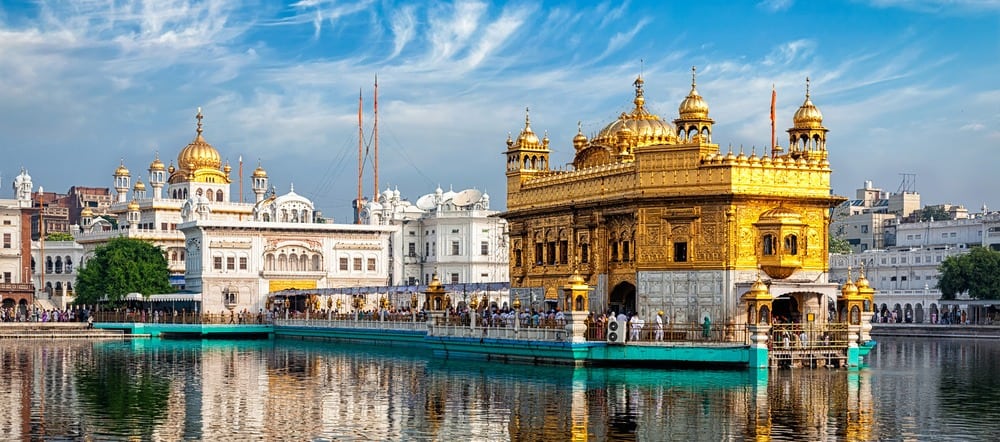
Amritsar is most famous for it’s Golden Temple, the most important of all the Sikh Gurudwaras and an important place of pilgrimage for all Sikhs. The spiritual centre of the Sikh religion, the Golden Temple was built between 1589 and 1601 and is a superb synthesis of Islamic and Hindu styles of architecture. In keeping with the syncretic tradition of those times, its foundations stone was laid by a Muslim saint, Miran Mir. It was virtually destroyed in 1761 by an Afghan invader but was rebuilt some years later by Maharaja Ranjit Singh, ruler of Punjab, who covered the dome in gold and embellished its interiors with lavish decoration. Today, the temple is a two-storey marble structure with an imposing dome of pure gold which is reflected in a surrounding sacred pool making this a stunning sight. One fascinating fact about the Golden Temple is that it is solely run by volunteers who feed up to 60,000 people every day, for free. A visit to their kitchens to see all this food and chai being prepared is a sight in itself.
Close to the Golden Temple is Jallianwala Bagh. It is the site of an infamous massacre that took place in 1919 when hundreds of unarmed demonstrators were gunned down in the enclosed garden on the order of General Dyer. A memorial to those killed stands in the garden along with an eternal flame to commemorate those who died. Close by is the newly opened Partition Museum which is also well worth taking a couple of hours to visit.
Amritsar is an easy drive from Wagah, a village divided in two at Partition, where the daily closure of the border takes place with great pomp and ceremony. Indian border guards in khaki and Pakistani border guards in dark green march, bark orders and lower their respective national flags in a symbolic stand-off, watched by orderly crowds of thousands waving national flags. There is much partisan cheering in the grandstands as the gates clang shut for the night, to be formally opened again the next day.

